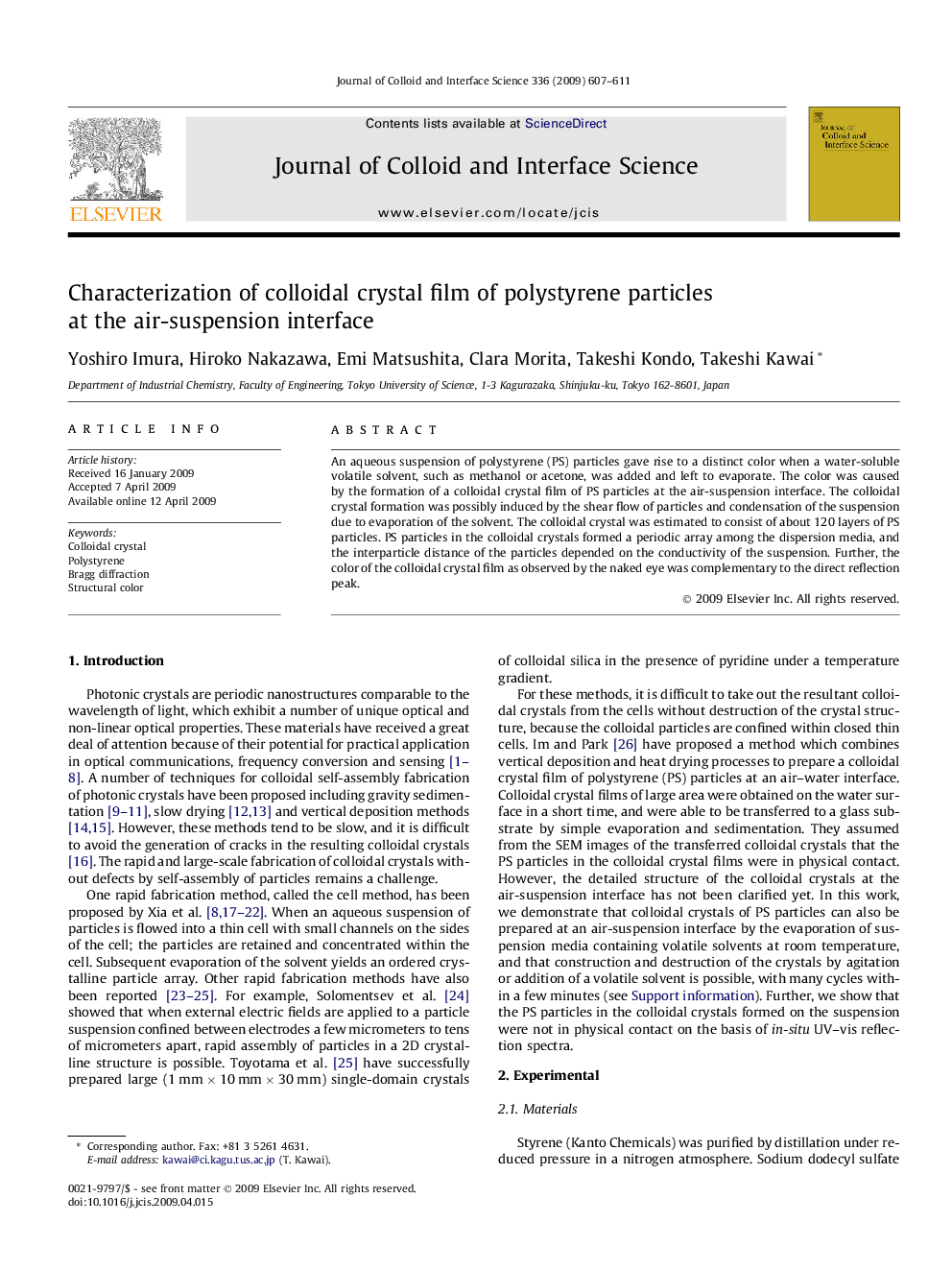| Article ID | Journal | Published Year | Pages | File Type |
|---|---|---|---|---|
| 610168 | Journal of Colloid and Interface Science | 2009 | 5 Pages |
An aqueous suspension of polystyrene (PS) particles gave rise to a distinct color when a water-soluble volatile solvent, such as methanol or acetone, was added and left to evaporate. The color was caused by the formation of a colloidal crystal film of PS particles at the air-suspension interface. The colloidal crystal formation was possibly induced by the shear flow of particles and condensation of the suspension due to evaporation of the solvent. The colloidal crystal was estimated to consist of about 120 layers of PS particles. PS particles in the colloidal crystals formed a periodic array among the dispersion media, and the interparticle distance of the particles depended on the conductivity of the suspension. Further, the color of the colloidal crystal film as observed by the naked eye was complementary to the direct reflection peak.
Graphical abstractColloidal crystal film of polystyrene particles was fabricated at the air-suspension interface by using water-soluble volatile solvent. The color was complementary to the direct reflection peak.Figure optionsDownload full-size imageDownload as PowerPoint slide
